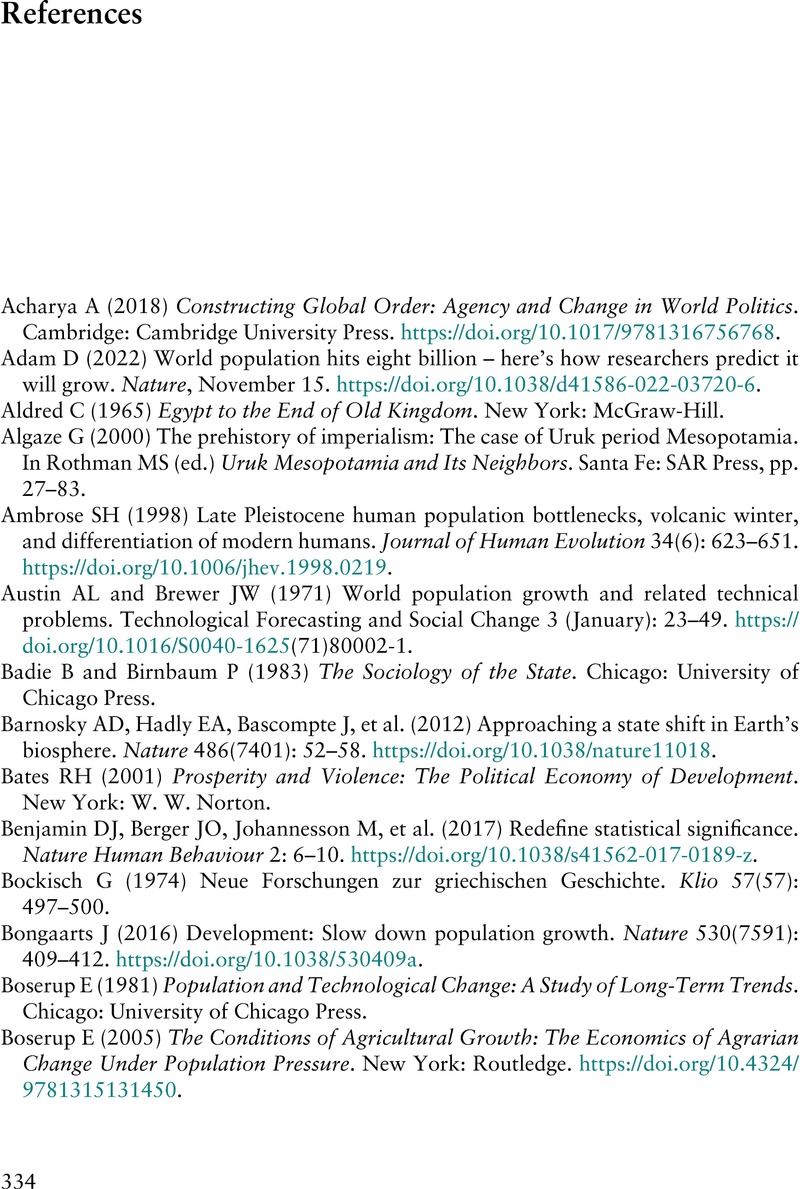Book contents
- More People, Fewer States
- More People, Fewer States
- Copyright page
- Contents
- Figures
- Tables
- Preface
- 1 More People and Yet Fewer States
- Part I World Population Growth
- Part II Empire Growth
- Part III Trends and Interactions
- Book Appendix: Chronological Table of Major State Sizes, −3500 to +2025
- References
- Index
- References
References
Published online by Cambridge University Press: aN Invalid Date NaN
- More People, Fewer States
- More People, Fewer States
- Copyright page
- Contents
- Figures
- Tables
- Preface
- 1 More People and Yet Fewer States
- Part I World Population Growth
- Part II Empire Growth
- Part III Trends and Interactions
- Book Appendix: Chronological Table of Major State Sizes, −3500 to +2025
- References
- Index
- References
Summary

- Type
- Chapter
- Information
- More People, Fewer StatesThe Past and Future of World Population and Empire Sizes, pp. 334 - 343Publisher: Cambridge University PressPrint publication year: 2024



